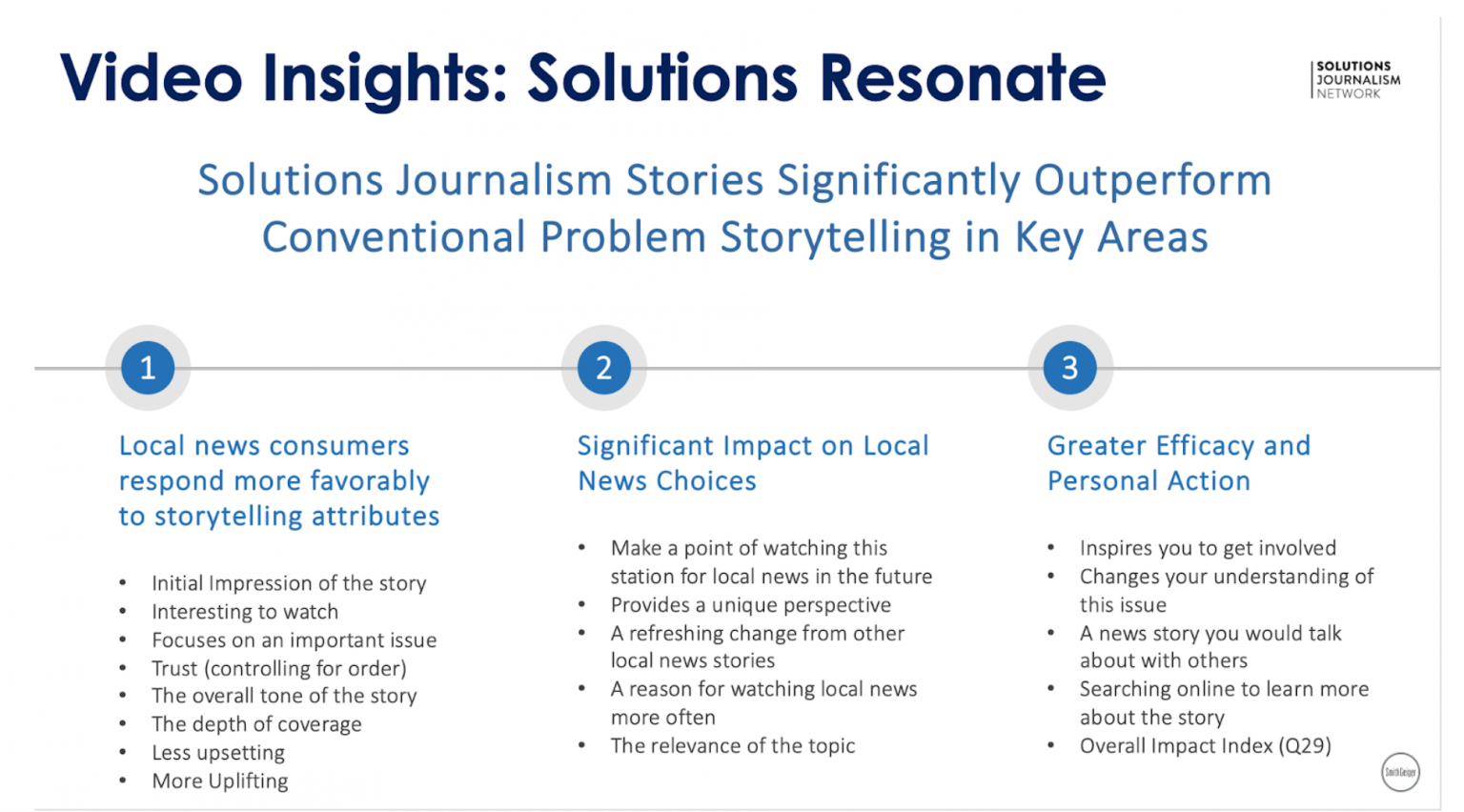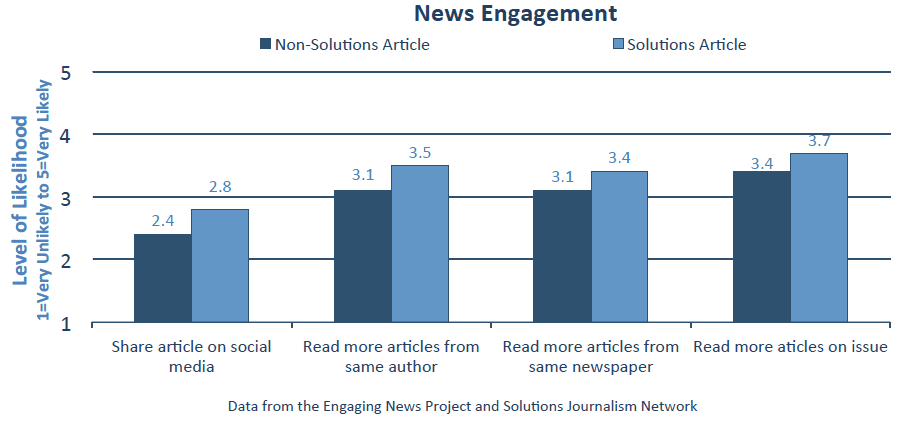
Home » Modules for decision-makers » Marketplace » Moving your media outlet forward » Handouts
The data supporting constructive journalism is beginning to speak for itself. Media studies and anecdotal evidence show that audiences engage with constructive journalism more deeply than they do with traditional reporting. Trust levels are higher as well as engagement rates. Higher trust and more engagement keeps readers loyal and attracts new ones, which can boost an outlet’s bottom line. The studies carried out so far are based in the US and Europe, but many results should be applicable to other regions.

Source: SmithGeiger

Studies
Engaging News Project (2014, University of Texas, Austin):
Solutions stories heightened audiences’ perceived knowledge and sense of efficacy, Strengthened connections between audiences and news organizations, and catalyzed potential engagement on an issue.
mediaengagement.org/research/solutions-journalism
Connecting to young, online audiences (2015, BBC World Service)
64% of people under 35 years of age wanted solutions-oriented news.
www.journalism.co.uk/news/five-key-research-findings-about-young-online-audiences-from-bbc-world-service/s2/a588021
Solutions Journalism & News Engagement (2016, University of Texas, Austin)
Readers of the solutions story spent about 25 percent more time on the page (roughly 30 seconds more) than did readers of the non-solutions version.
mediaengagement.org/research/solutions-journalism-news-engagement
The Keys to Powerful Solutions Journalism (2019, University of Texas, Austin)
The study out of Texas looked at core components of solutions journalism and found that articles using that approach improved readers’ perception of article quality, increased readers’ intentions to engage, increased readers’ interest in and knowledge about the issue, and boosted readers’ positivity.
mediaengagement.org/research/powerful-solutions-journalism
News Experiences and Opinions in Denmark (2020, Constructive Institute)
A third of the population feel that news often puts them in a bad mood. More than half of the population believes that news focuses more on negative than positive perspectives on events. 57 % of Danes would prefer to read a news article with a constructive rather than a conventional news headline.
constructiveinstitute.org/why/epinion-report
Transforming Engagement – (2021, SmithGeiger)
A US study found that solutions storytelling offers key benefits for journalists and news consumers alike across platforms and demographics.
sjn-static.s3.amazonaws.com/SmithGeiger2020.pdf